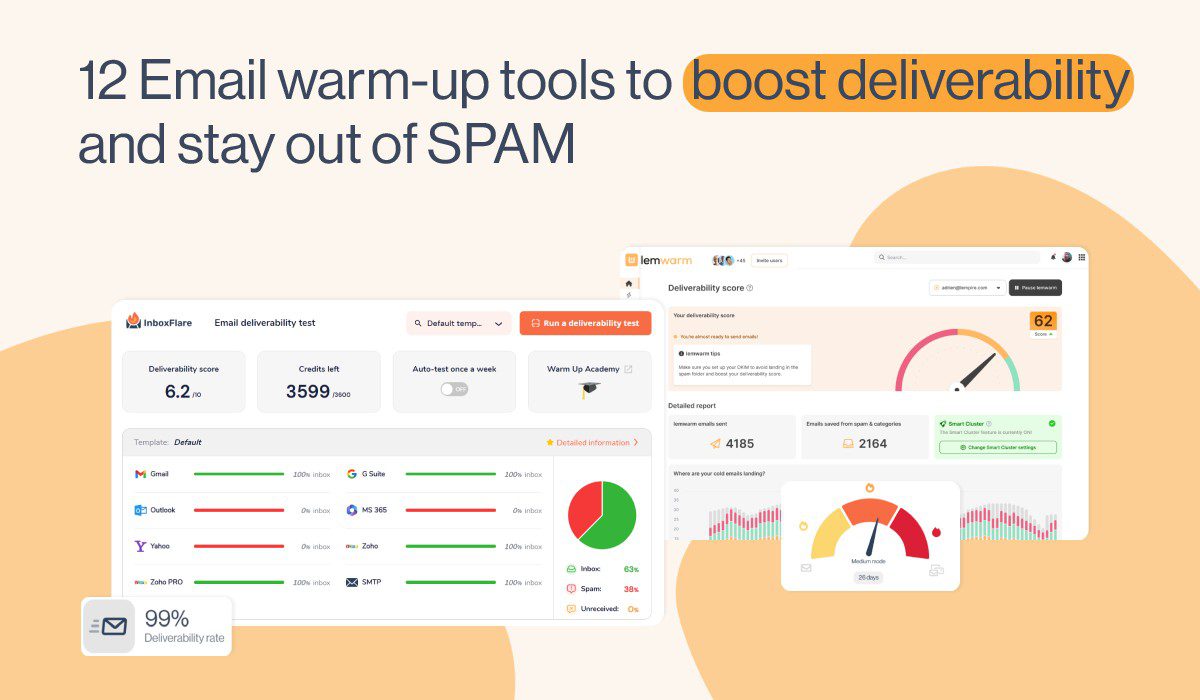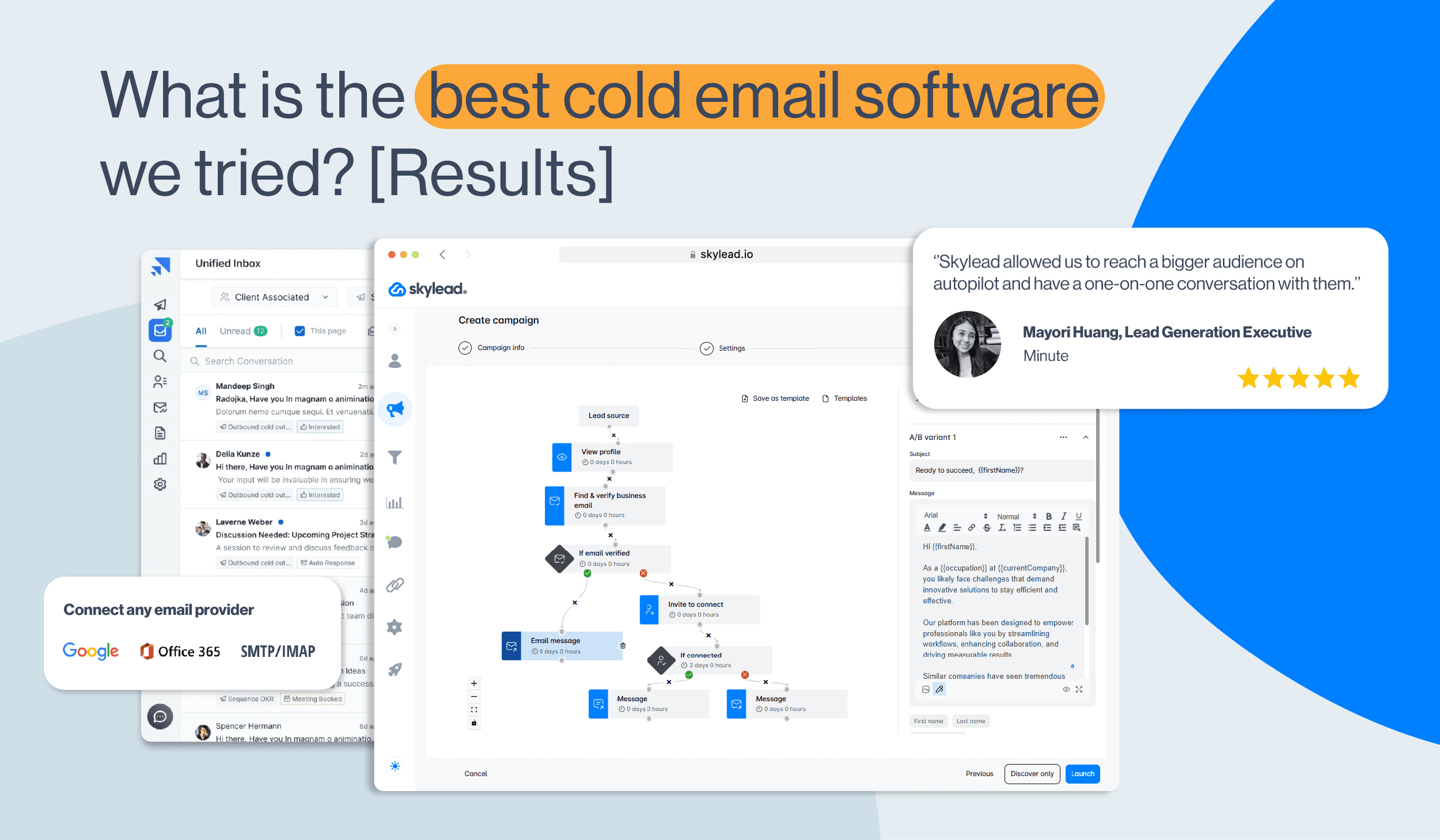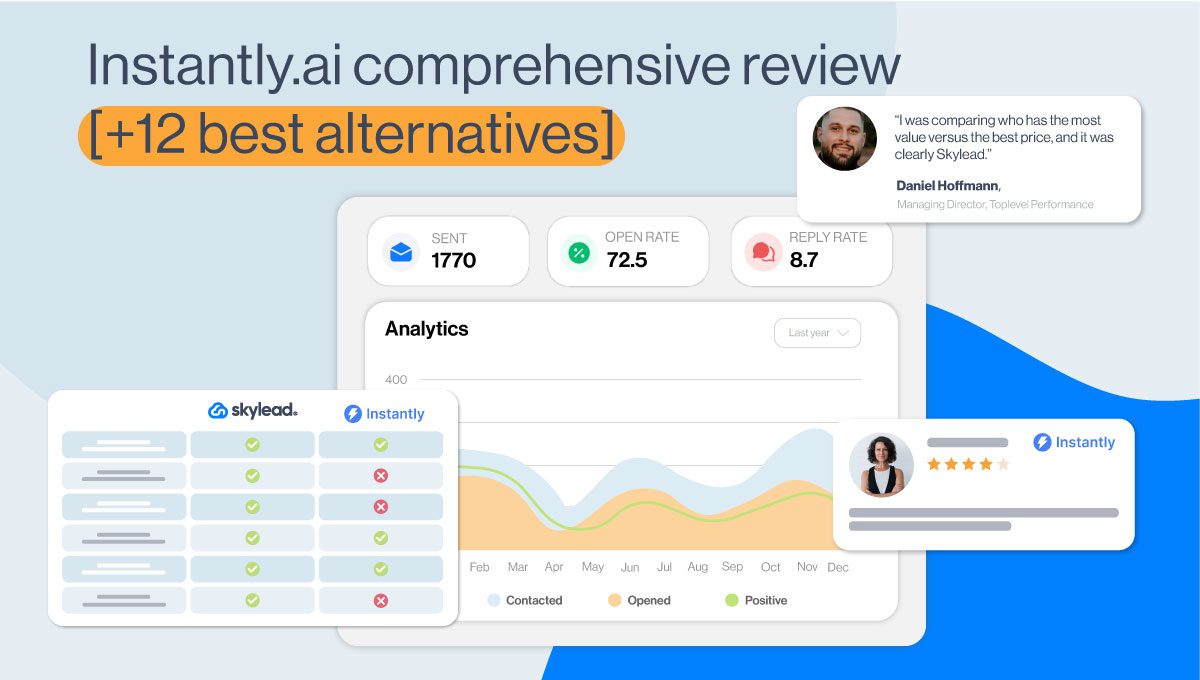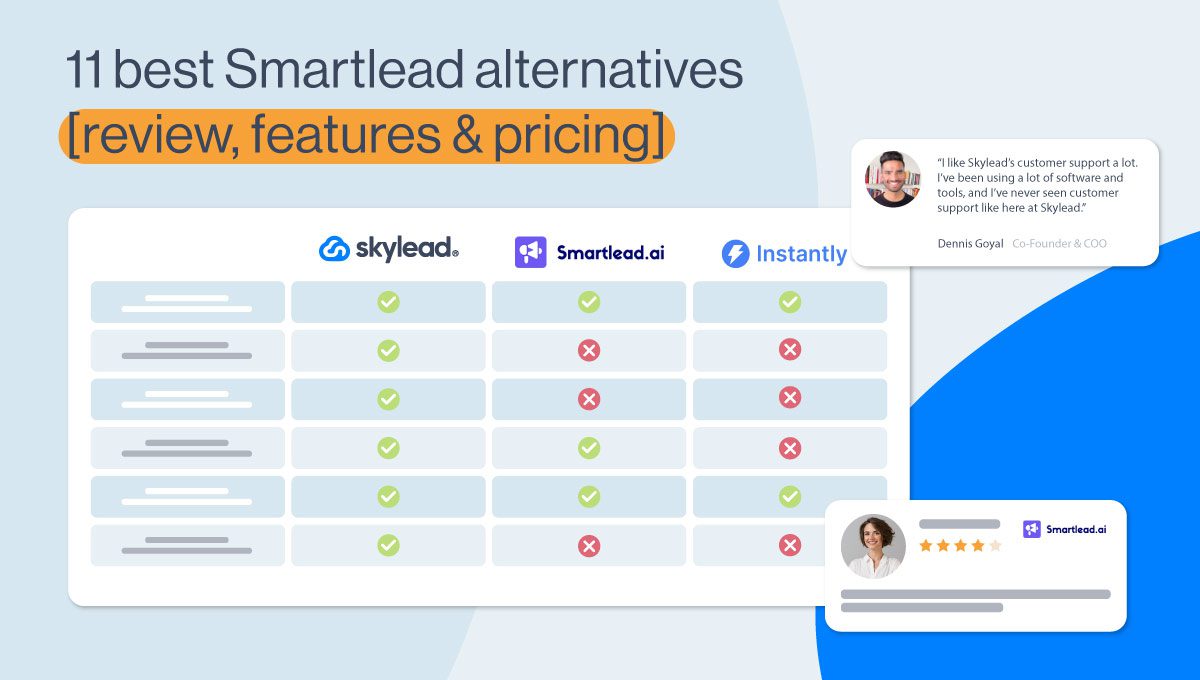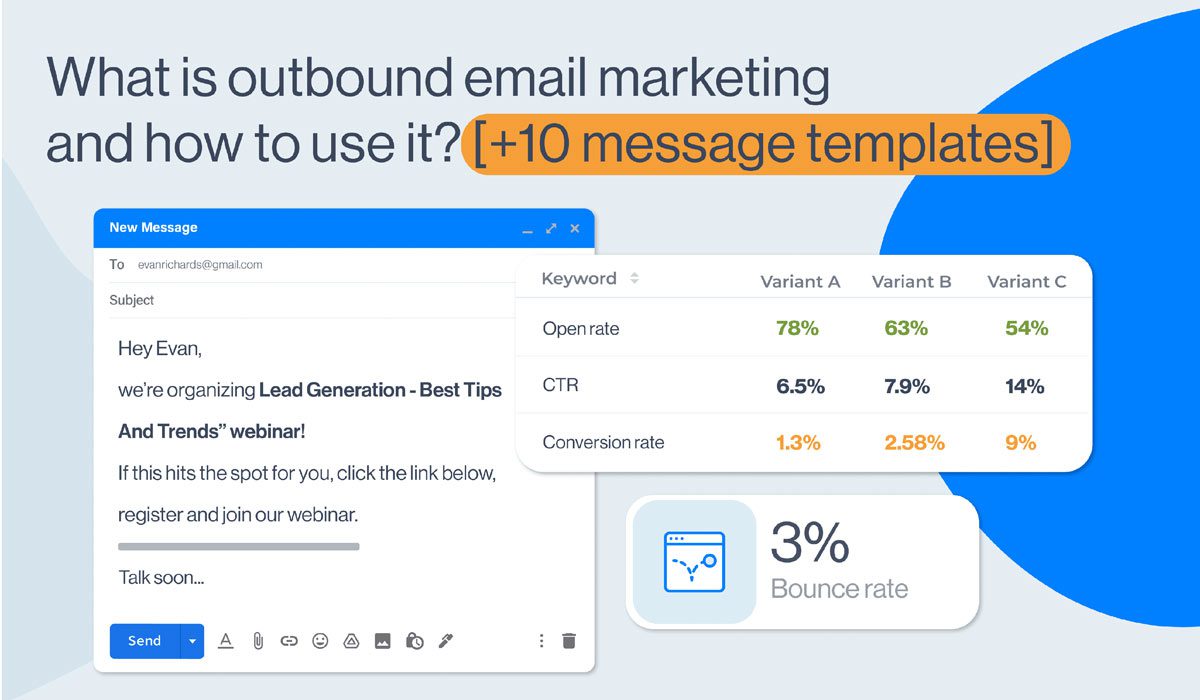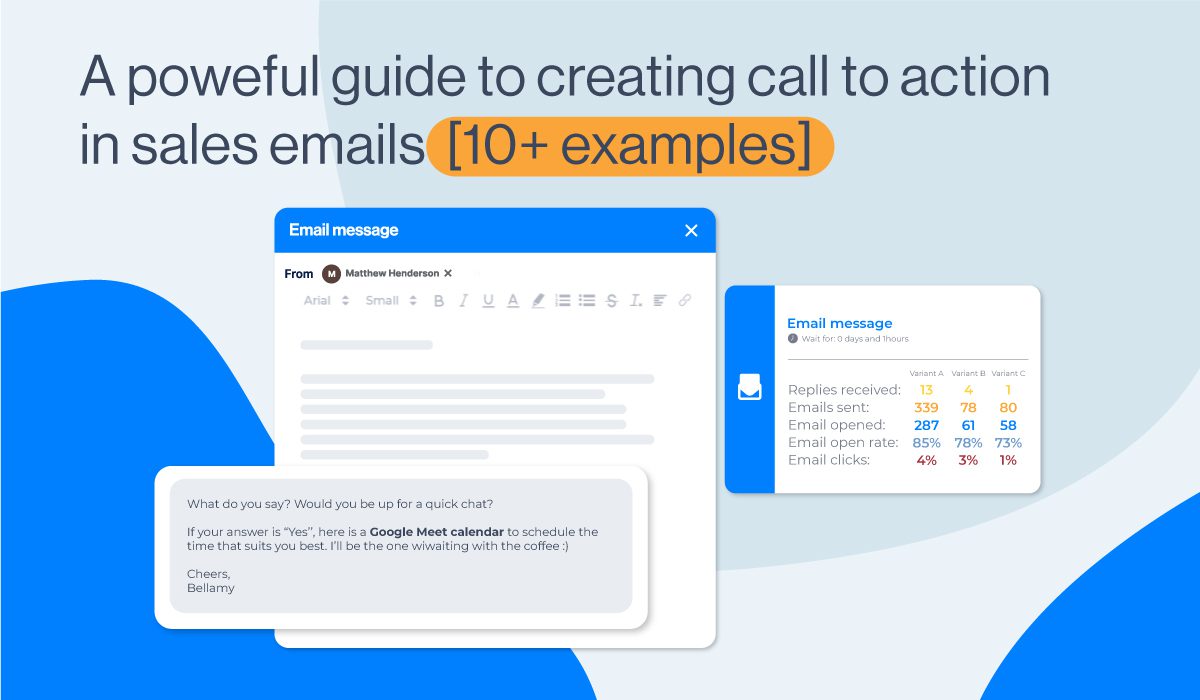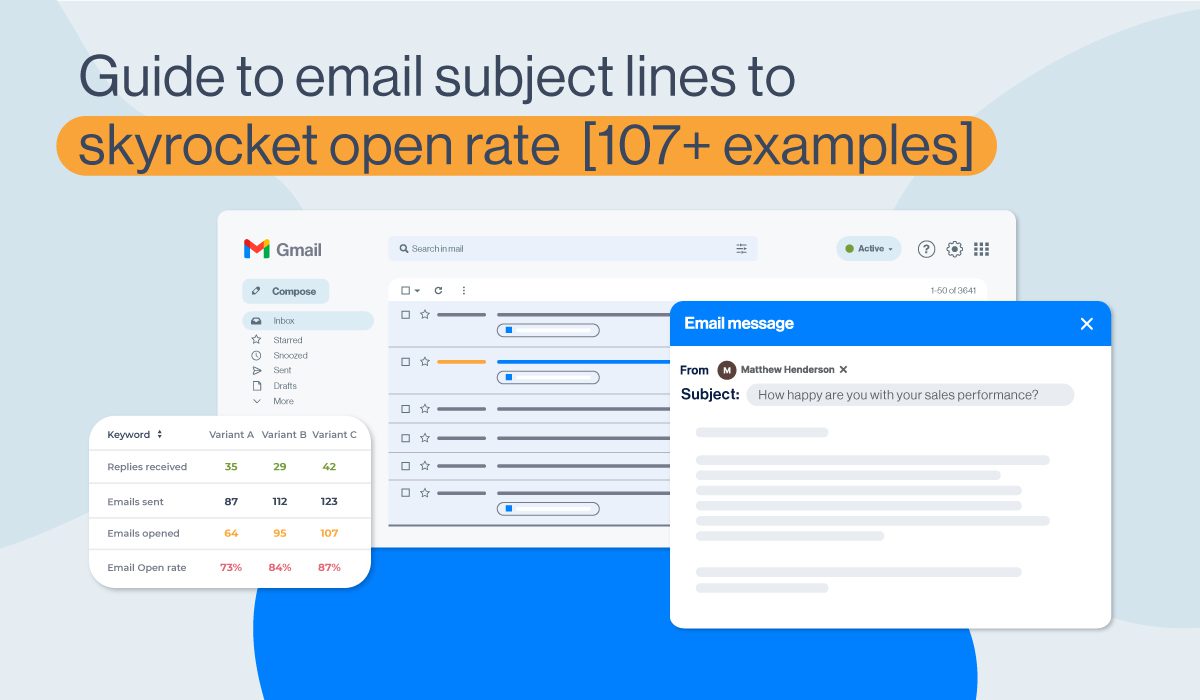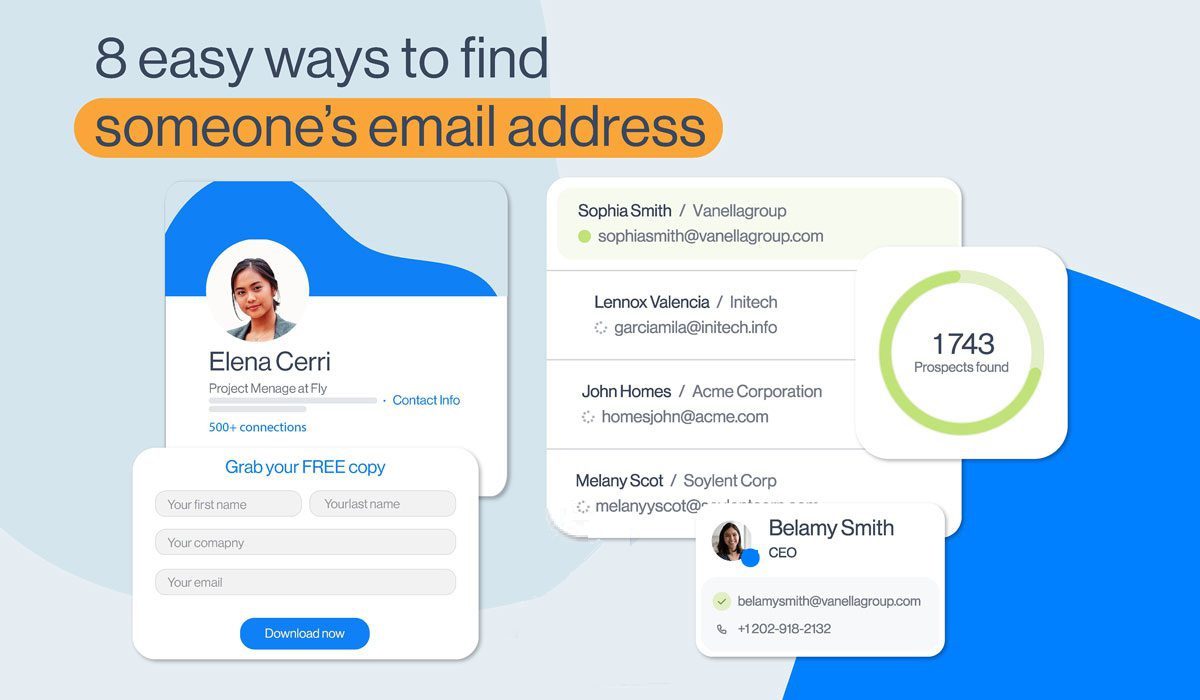18 cold email mistakes [and how to fix them]
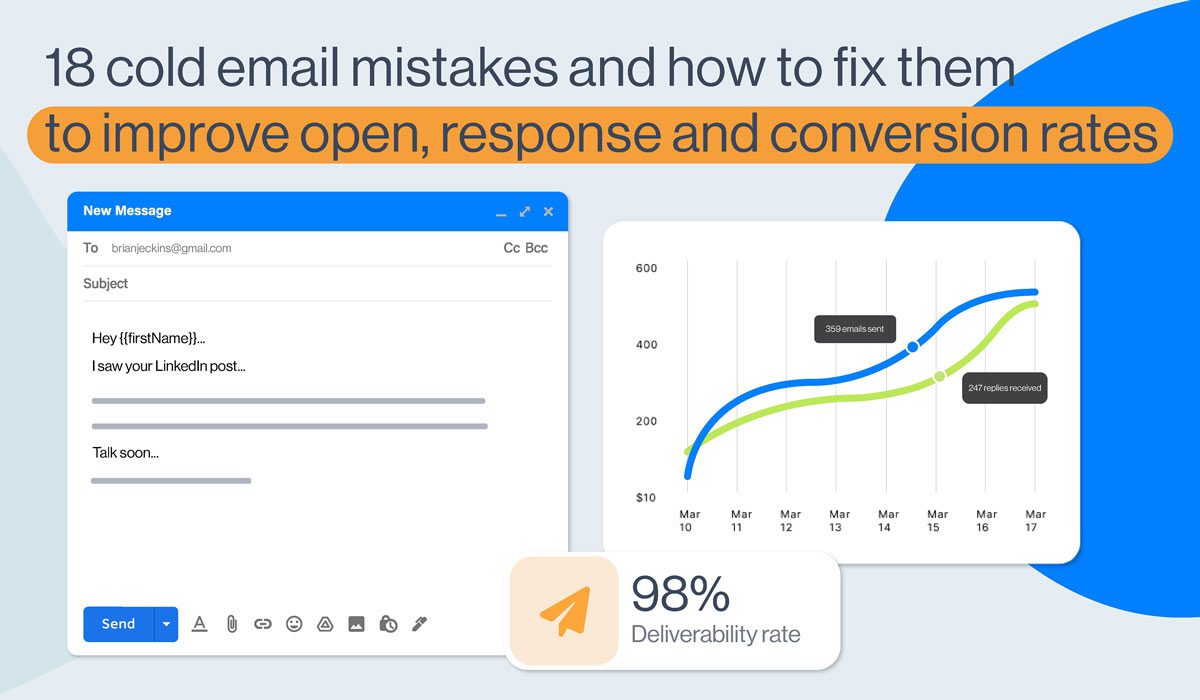
Blank email interface. Insertion point flickers on your document. You can feel it staring back, almost judging you for not knowing what to write anymore for your cold email outreach. You tried everything - it’s not working, and you don’t understand what you are doing wrong.
Once again, without any inspiration, you scribble what your company does, offer a product, and mass blast it.
You wait. A couple of days later, history repeats itself. There is no response.
You think to yourself ’’This is too hard’’, or worse ’’This is not working for me’’.

As Darth Vader, you start breathing heavily. Take off the mask and get wind of the list of cold email mistakes you're probably making, what impact they have on your email metrics, and how to fix them to improve email campaign performance.
Do not worry. These mistakes happen to everybody.
The most important cold email outreach metrics
Before we dive deep into these email mistakes, let’s recap the metrics you need to track that will tell you a lot about your overall campaign performance.
Understanding and tracking the email metrics is crucial when deciding if your outreach campaign was victorious. It’s like putting a billboard up in the city and not knowing how many people saw it or bought your product afterward. Thanks to technology, now you can.
To be more precise, to measure email performance, you need to knowhow many emails were bounced, opened, responded to, and how many people converted via cold email outreach. Once you have that mastered, you can start creating engaging cold email campaigns.
#1 Cold email metric: Bounce rate
Bounce Rate in email outreach is the total percentage of email messages that have not been delivered successfully. This can happen if for example an email address is invalid or there is a technical issue with the email provider.
How to calculate email bounce rate
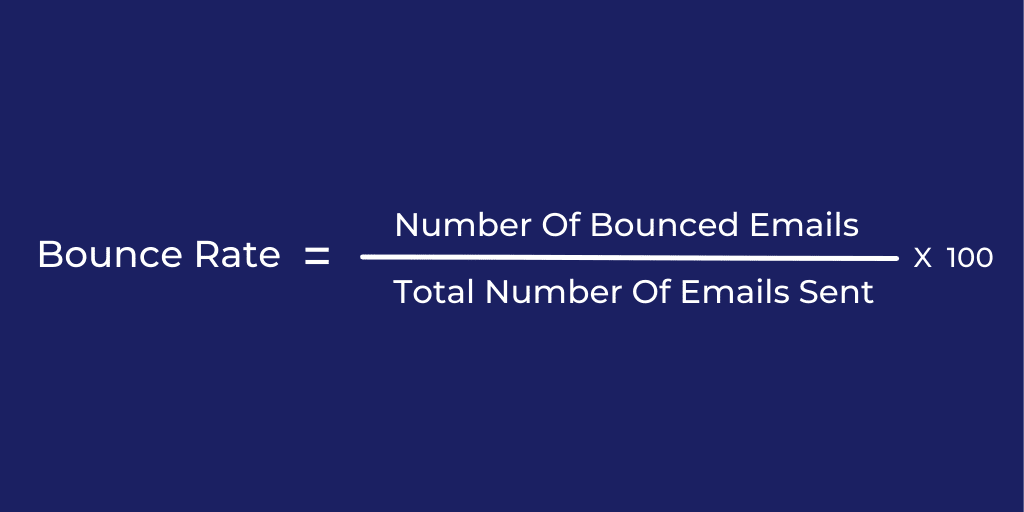
Example:
Let’s say that during your email campaign you sent 1000 email messages. Out of those, 98 weren’t successfully delivered. The calculation would go like this:
Bounce Rate = 98 / 1000 x 100 = 9.8%
#2 Cold email metric: Open rate
Email open rate is the percentage used as an indicator of email campaign health. The higher it is, the better.
This metric doesn’t tell you a lot about the email convertibility as a whole. However, it can indicate why it wasn’t opened, whether or not your subject line, or preview text (first several words of your email body) are appealing or can imply broken email deliverability.
How to calculate email open rate
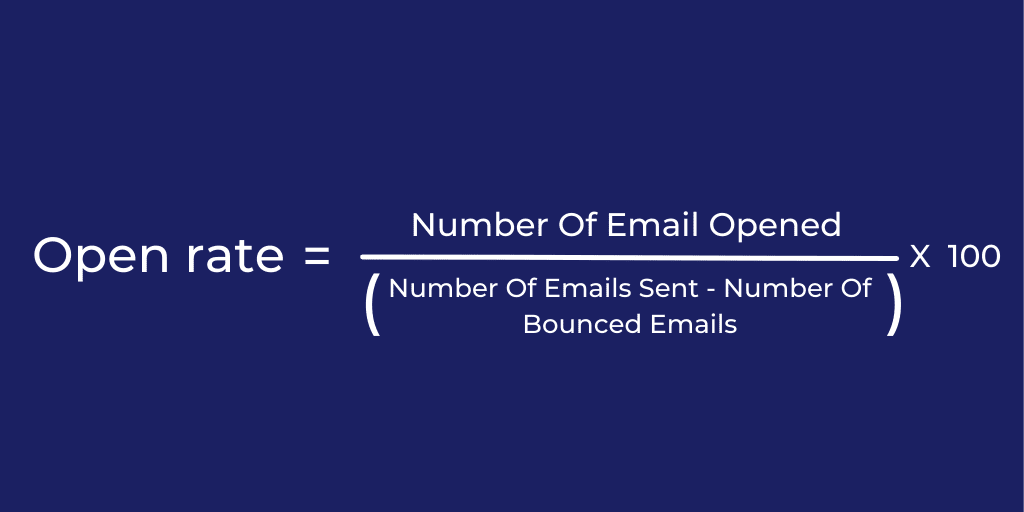
Example:
Taking the numbers from the previous example, say, you have 1000 sent out, 98 out of those bounced and 565 were opened. The calculation will go like this:
Open rate = 565 / ( 1000 - 98 ) x 100 = 62.63%
#3 Cold email metric: Response rate
It’s nice to have a high Open rate, but it is even better to have a high Response rate, as well. As per its name, this metric indicates the number of individual emails in the cold campaign that leads responded to. This metric shows the quality of your email’s content. Ultimately, a good response rate means that you’ve managed to get the lead’s attention.
How to calculate email response rate
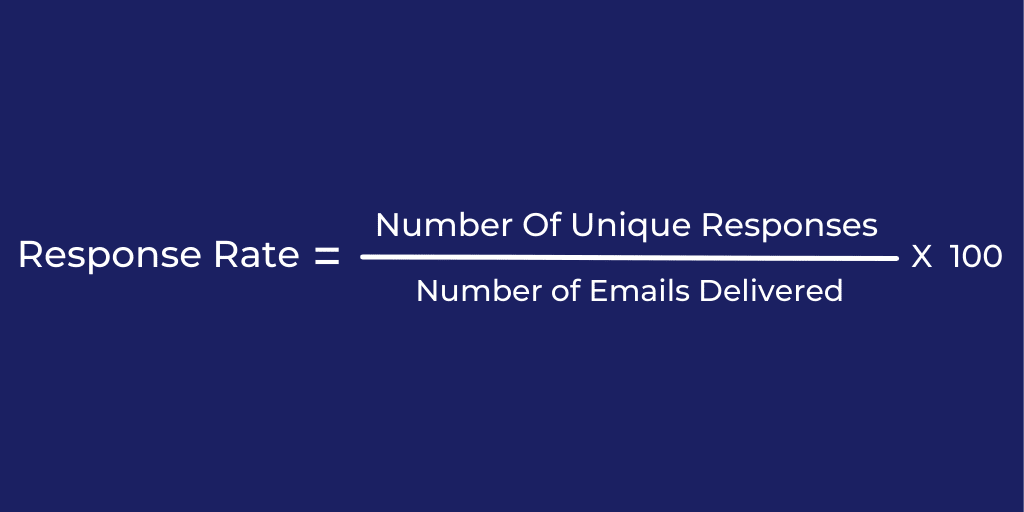
Example:
Continuing the example thread. Now you have 902 unique emails that have been delivered. Out of those, only 133 leads responded. The calculation goes like this:
Response rate = 133 / 902 x 100 = 14.75%
#4 Cold email metric: Email conversion rate
Conversion is an activity when a lead completes a desired goal, such as signing up for Demo or starting the Subscription. That said, conversion rate for email outreach is the percentage of prospects who took the desired action from your email campaign.
To find out more about conversions, their types, and other KPIs, check out 5 Must-Know KPI Metrics to Grow Your B2B Business [Bonus Metrics Included].
Needless to say, the conversion rate is the ultimate metric to figure out if an email campaign was successful.
How to calculate email conversion rate
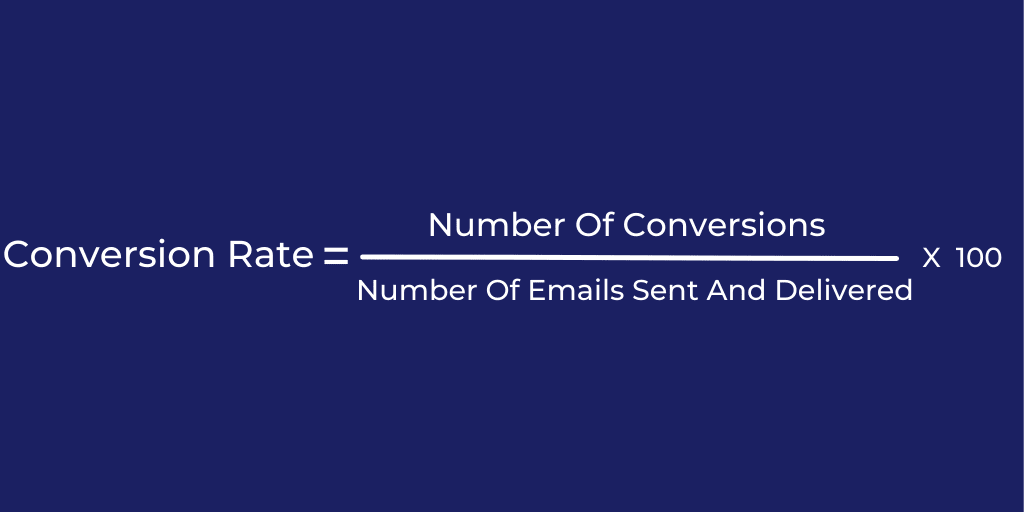
Example:
Out of 902 successfully delivered emails, you have 36 conversions in total. Calculation is the following:
Conversion Rate = 36 / 902 x 100 = 3.99%
Now let’s see what email mistakes you are making that negatively impact these metrics and how to correct them.
Cold email outreach mistakes to say goodbye to
Successful email outreach is a lot tougher than ever these days. With so many emails cramping up the leads inboxes, it is hard to remember and know what best works for your targeted prospects, let alone see the mistakes that slither in without you even noticing.
That’s why we created this ultimate guide to the most common email mistakes, how they affect the metrics, and how to fix them. First, let's break the email mistakes down into the following four categories to make it easier. There are Email Mistakes:
- Affecting Deliverability
- Regarding Content
- Related To Attitude Towards the Prospect
- Affecting Sales Process
I Email mistakes affecting deliverability
1. Acquiring poor quality leads
Let’s address the elephant in the room: many came across a situation where you are weighing options whether you should go for a cheaper alternative or not when buying prospects’ data. Unfortunately, the cheaper option almost always leads to devastating results in the end.
Starting, the leads’ contact information you get from unverified vendors might be completely untargeted for your outreach. You can get every mistake right on this list, but if your ICP is not targeted, the entire email outreach will fail.
Or, maybe the prospect’s name is incorrect, and you might address them wrongly which will definitely affect the response rate and you will lose this lead. Forever.
But there is a worse case scenario above all: if emails are invalid or non-existent, they can crumble your email outreach efforts because it increases the bounce rate and risks getting your domain blacklisted.
Think of it as the butterfly effect: the bigger the bounce rate is, the more it damages your domain health and increases the danger of getting your emails in the spam folder or domain blacklisted. It also decreases your open rate, response rate, and conversion rate in the long run.
What to do?
Buy the data from well-established and verified data vendors or gather the right information as first-party data yourself.
Another solution is to find a reliable partner for data research or introduce your sales team with a sales engagement tool for outreach that has email discovery and verification features.
2. Adding a big number of links or sending the broken ones
Everyone wishes to tell the prospect as many things as possible about our product or service. We want to show them the blogs, ask for a meeting, attach a whitepaper file and add alternative comparison pages for them to see. While this confuses the prospect regarding CTA (which we will mention below), it also overcrowds the email itself, making email providers raise their robot heads as bloodhounds. Too many links or files in your email will trigger a warning to the email provider and increase the possibility for your emails to twirl down to the Spam folder.
Furthermore, if you send a broken link to prospects, they will think of you as an unprofessional or worse spammer, and it will decrease the response and conversion rates, as they will lose interest in you.
What to do?
Try to keep the number of links to a minimum as you can (preferably without any links), and of course, check the links before sending.
Additional tip: If in your signatures you have linked icons, check every one of them. As those links count as well, and sometimes they get broken, it’s better to be safe than sorry.
3. Sending too many messages per day
We all wish to send as many emails as possible for a short period. But this is a big mistake, especially if your email address is new. Sending too many emails per day can result in your messages ending up in the Spam folder. This can be one of the causes of your open rate dropping.
What to do?
Slowly warm up your email address manually by sending a low number of emails, and then gradually increase the volume over some time. Or, use email warm-up tools to do it automatically. The warm-up of a new email address or domain can last from 30 to 90 days.
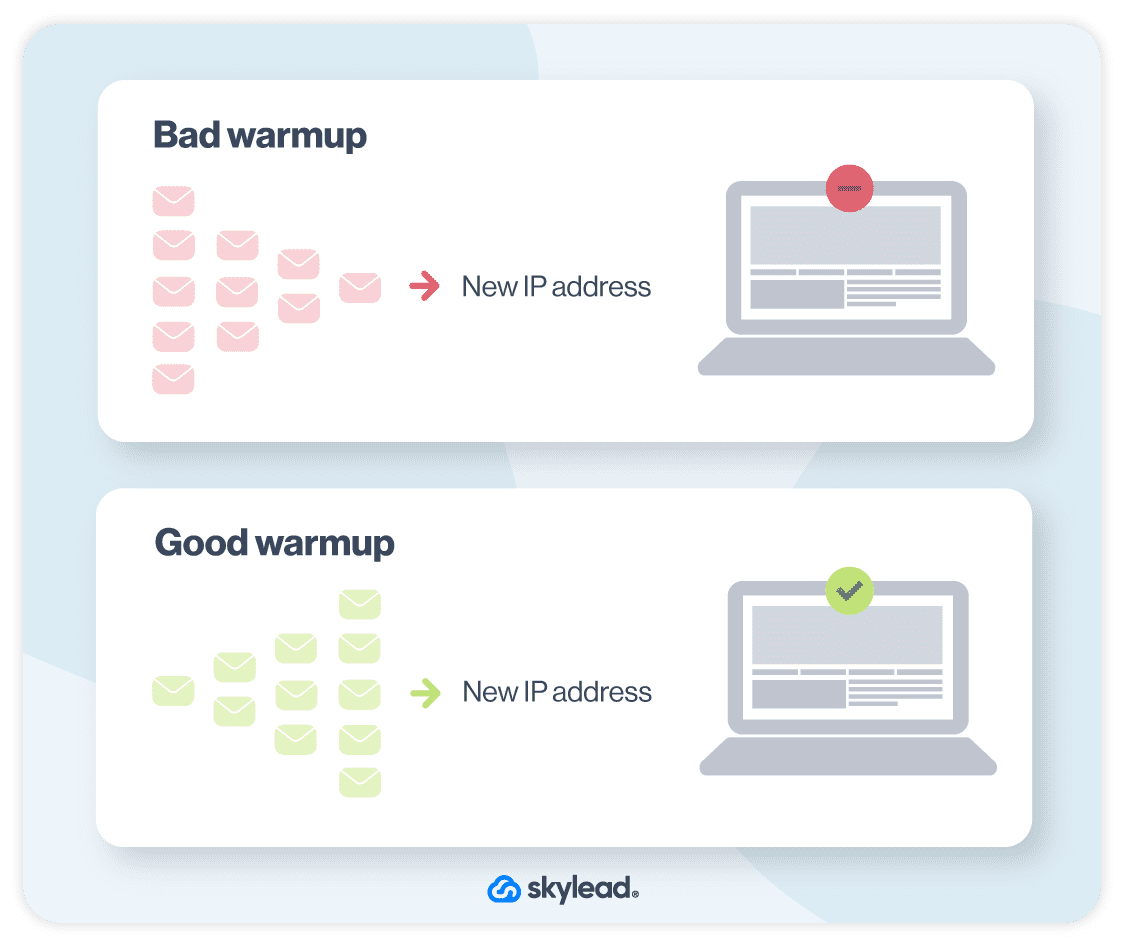
II Email mistakes regarding content
4. Being too casual or too formal
Balance is everything. Sales representatives sometimes go overboard trying to get their prospects to laugh, which only ends up being too cringey. We do not say GIFs or jokes are bad, we even use them in outreach, and thread them to the context of the message. So know what thy boundaries are.
Then on the other side of the scale, we have an overly formal approach. The truth is that everyone wishes to be respected, so a formal approach is good, but if you go overboard, you will sound like a robot.
What to do?
Find the balance between the two scales. You can even send personalized GIFs or Images to show creativity and genuine interest, but keep it tasteful.
When it comes to an overly formal approach, you can loosen up a bit.

5. Subject lines mistakes
Coming up with the subject line cannot be an easy feat. It has to be attractive, short, explain everything but still leave the prospect interested in clicking on it. As challenging as it is, there are still some mistakes people make when it comes to these:
- Spammy or clickbait subject lines - Big no. It will only enrage your prospects.
- Subject lines not specific enough for the market – This can cause lower open rates as the prospects will not relate to the email at all.
- Subject lines in caps lock - It’s good to be excited, but you don’t need to shout at your leads to get the attention.
What to do?
These mistakes influence every important email metric starting open rate, so make sure to avoid them. Think about how you would attract the leads’ attention and bind the subject line as a whole with the email body. Even better, try to make the subject line as a prequel to your Preview text of the email and make it a united lead magnet.
6. Message copy not relevant to the market
As mentioned for the subject line, you need to keep a close eye on your email content's relevance to the market, as well. Writing an email not relevant to the industry can result in a lower response rate and conversion rate.
What to do?
Go full private detecting on this one. Research the industry, find the pain points. Go even further - find prospects' companies and information about them. Show them you understand the industry problems and what solution you offer instead.
7. Self-centered messages to prospects
Writing messages that are more focused on you instead of your prospects’ companies can come across as being too aggressive or assertive, resulting in lower response rates.
What to do?
Instead, be aggressive in knowing your lead: Showcase the research you did on them, ask for the call to know more about their pain points and see how your product or service can aid them further.
People resonate with what’s in it for them. Talk about them, gain their interest through email.
Example:
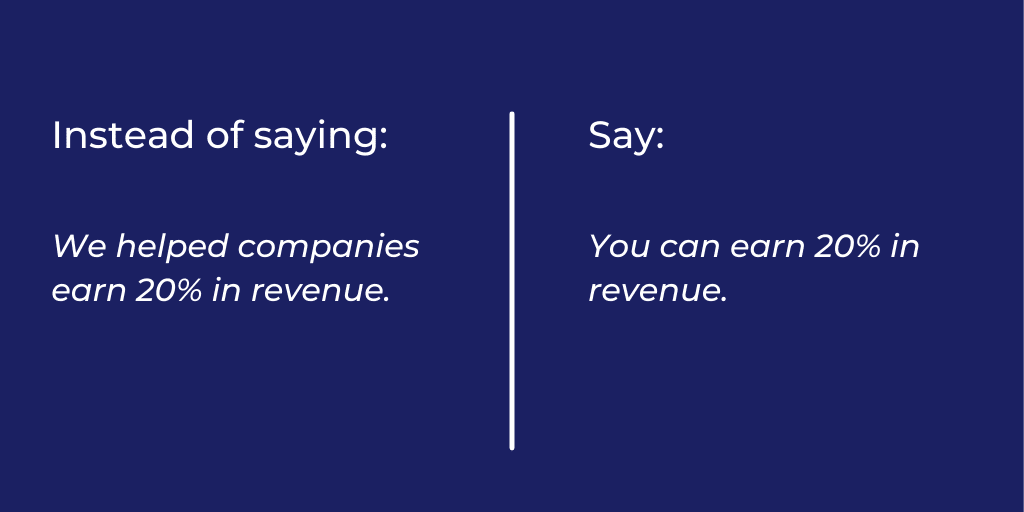
8. Adding too much CTAs or not at all
As mentioned above, if you wish to show the prospect the blog posts, ask for a meeting, add alternative comparison pages for them to see, and top it off with a YouTube video - Stop.
All these are a type of call to action, and piling them in one email will only confuse the prospects regarding CTA.
On the other hand, if you do not use CTA at all, you will lose the purpose of your cold outreach, so the prospects won’t have action in their mind to fulfill.
What to do?
The goals of outreach campaigns are different for every purpose. Define one short CTA, and stay away from the unclear ones.
For more information on CTA in sales emails, check out our Detailed Guide On Crafting The Powerful Call To Action.
9. Not enough value
Often, our value proposition is not deep enough, doesn’t hit the bullseye, and is too generic. This directly affects the response rate, and you will lose the prospect as you weren’t compelling enough.
What to do?
Once again, put on your detective glasses and go into deep search of a particular prospect’s main pain points. You need to know and understand them.
If you can explain their situation better than they can, they will automatically assume you have the solution and gain interest.
Example:
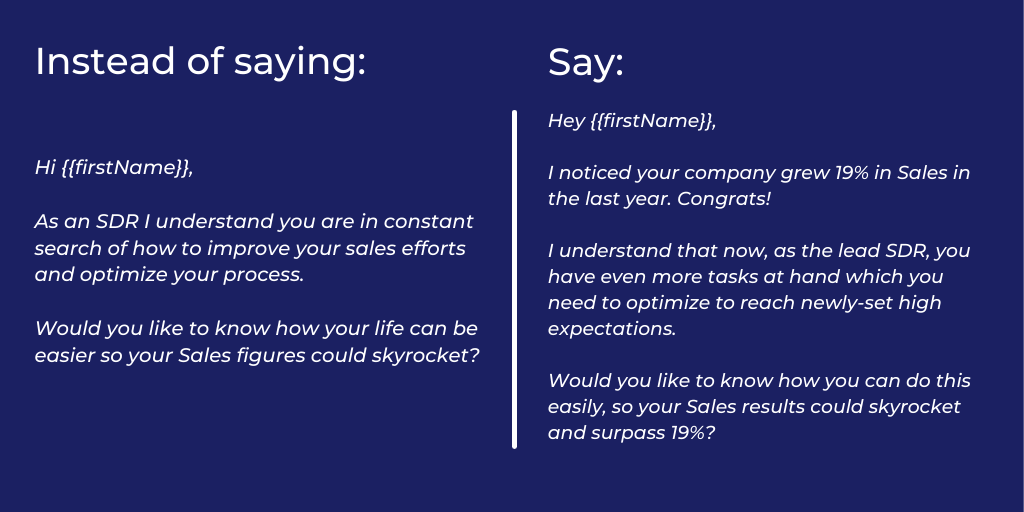
10. Unnecessary text length
If your cold email message is too long and has numerous paragraphs, take a step back.
Let's say you are reaching out to CEOs or other higher-up positions. They usually have a lot on their plate, so you probably know the one virtue they lack is time. Please make sure to not waste it.
What to do?
If you can draw the line through any piece of your text without losing the value, remove it.
Let's say you have sentences such as:
- I know you are busy but...
- I’m following up...
- I’d love to give you a demo…
- Do you perhaps know when would be the best time...
You won't lose the value if you cut them off. So instead, tell them something short, sweet, and essential about their business in particular, straight to the point:
- I see that your company struggles with VALUE...
- Would Wednesday at 10 AM work for you...
III Email mistakes related to attitude towards the prospect
11. Questioning the prospects integrity and authority
Now we have a mistake example, which is little farther down the cold email outreach sequence. Let’s say you have a correspondence with the lead from medium or large company who you are not sure if they are a decision maker or not.
Asking a straightforward question ’’Are you the right person?’’ or responding ’’I guess you are just not the right person to reach out to’’ after they do not reply is a big no-no.
Simply do not ask a straightforward question if someone is a decision-maker. If not a decision-maker, they would feel invalidated.
Or maybe they indeed are, but your outreach was just not that compelling enough to respond to, or they might think ’’If I'm not, would you treat me with the same respect?’’ Either way, this is how you will decrease your conversion rate.
What to do?
If you really wish to know if someone is the right person to reach out to, then you can say something like this:
When you bought this {{Product}} in the past, who was involved in the process?
12. Being authoritative over or submissive under the prospect
There are three ego states in the body: child, adult, and parent ego state. If you command someone to do something, you talk to someone from the parent's ego state, and they will automatically go to their child's ego state.
An example would be ’’Let me know the time that works for you’’.
How would you feel if you got this sales email?
Would you want to rebel against that sentence? Your prospect would want to rebel too.
Another example would be if you start your email with just a prospect's name, it will trigger a child's ego state, and they will think they are in serious trouble. You would want to increase the chance of somebody responding, so when cold outreaching, your goal should be to trigger ONLY their adult ego state.
What to do?
So what to avoid in communication exactly?
- Commanding to prospects to do something (Child ego state trigger)
- Putting accountability on them for not responding (Child ego state trigger)
- Invalidate their objections (Child ego state trigger)
- Sentences like:
- Just checking in...
- I know you are busy but…
- Would you have the time… (Parent ego state trigger)
Overall avoid triggering their Parent or Child ego state. Instead, trigger an adult ego state.
For example, instead of saying:
Would you have the time…
You can offer an up-front contract. For example, write the exact time and date of the meeting and ask for consent. Additionally, provide an agenda for your call.
13. Judging or making the prospects feel bad
Even though you think you will never do this to your prospects, this type of mistake is one of the most common ones.
The first example is being harsh regarding the leads' choice to use similar products. Even though you are not saying anything bad about the leads themselves, you are indirectly insulting the decision they made. This easily translates to insulting them.
What to do?
Instead of judging the prospect for using a competitor and bragging why your product is better, say something like this:
Oh, you are using an XY competitor? That’s great! So you are familiar with the type of product itself. What differs our product from them is…
Also, do not allow your words to make your prospects feel bad. Put the onus on you, not on your prospect.
Example:

IV Email mistakes affecting sales process
14. Not setting up follow up messages sequences
Not having your follow-up game is the next in line of common lead generation mistakes (both for lead generation on LinkedIn and off). If the prospect doesn’t reply, do not give up.
Follow-up emails always get a better response rate than the first email. In this study, there is an illustration of difference as follow-ups got 18% response rate higher than the first email, 13% to the fourth, and 27% to the sixth email *.
What to do?
Set up follow-up emailing sequences for the prospects who did not respond. Even if they do not respond to these follow-ups, insert them for other purpose sequences. Never give up, and never give in.
15. Not tracking email campaigns’ performance
As we mentioned in the beginning, tracking is everything when it comes to your sales effort, especially if we talk about cold outreach.
If you do not know what you are tracking, how would you know if the channel is effective?
What to do?
So be sure to set and track the following:
- Bounce Rate
- Open Rate
- Response Rate
- Conversion Rate
On the other hand you can use a sales engagement tool and cold email software such as Skylead to track it for you. Analyze the chosen tool thoroughly and start tracking your performance.
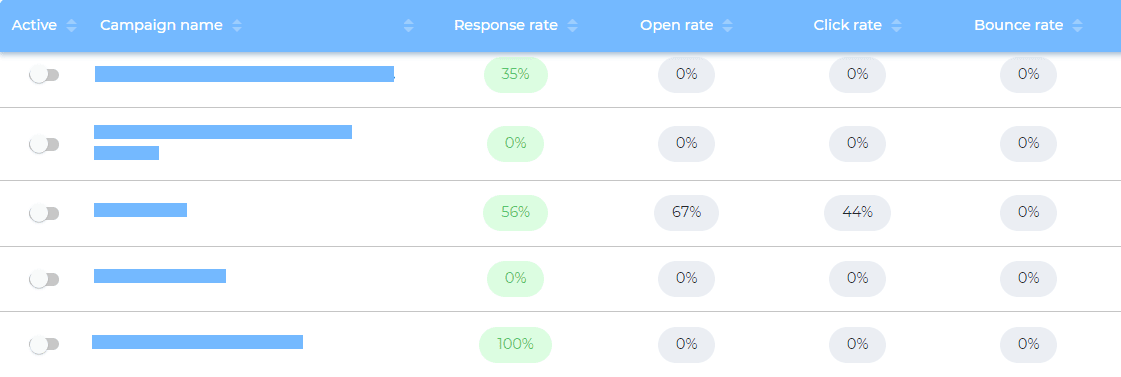
Honorable mentions
We cannot finish this blog, without mentioning a couple of short email mistakes which are essential to correct.
16. Poor Grammar - you have so many grammar checkers and tools available on the internet nowadays to remove sloppiness in communication.
17. Using initials - signing your email message using your initials such as J.K. can come across as unprofessional. Use your full name and surname in your signature.
18. Not personalizing the email - Nowadays, in the cold outreach, you need to step up your personalization game, especially if you did the prospecting on LinkedIn first. To learn all about outreach personalization check out Cold Outreach: Increase The Level of Personalization [+Templates]
Summary
Cold email outreach is still a powerful tool for lead generation and conversion if done right. Take time to study all of the mistakes mentioned above, let them be your guide, and double-check.
Here are all the email outreach mistakes to serve you as a checklist:
1. Acquiring Poor Quality Leads
2. Adding A Big Number Of Links Or Sending The Broken Ones
3. Sending Too Many Messages Per Day
4. Being Too Casual Or Too Formal
5. Subject Lines Mistakes
6. Message Copy Not Relevant To The Market
7. Self-Centered Messages To Prospects
8. Adding Too Much CTAs Or Not At All
9. Not Enough Value
10. Unnecessary Text Length
11. Questioning The Prospects Integrity and Authority
12. Being Authoritative Over Or Submissive Under The Prospect
13. Judging Or Making The Prospects Feel Bad
14. Not Setting Up Follow Up Messages Sequences
15. Not tracking email campaigns’ performance
16. Poor Grammar
17. Using initials
18. Not personalizing the email
Now get too cold email writing - You’ve got this. Godspeed!
Wish to use email and LinkedIn in your outreach and successfully track their performance? See Skylead in action - Start your 7-day Free Trial.

